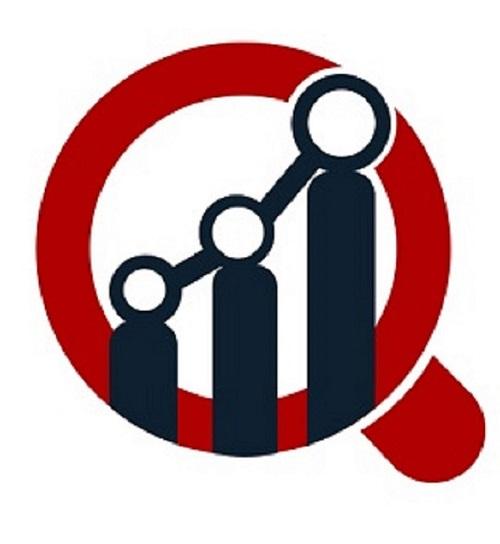IoT Based Asset Tracking Monitoring Market

IoT-based Asset Tracking and Monitoring Market Introduction
In today's fast-paced business landscape, effective asset management is crucial for optimizing operations, reducing costs, and ensuring the security of valuable resources. Internet of Things (IoT) technology has paved the way for innovative asset tracking and monitoring solutions, reshaping industries from logistics and manufacturing to healthcare and agriculture. This article explores the IoT-based Asset Tracking and Monitoring Market, examining its drivers, applications, and the transformative impact it has on various sectors.
Understanding IoT-Based Asset Tracking and Monitoring
IoT-based Asset Tracking and Monitoring refers to the use of connected sensors, devices, and software to track the location, condition, and utilization of assets in real time. These assets can be anything from vehicles, equipment, and inventory to personnel and even livestock. The IoT ecosystem collects data, processes it in real time, and provides valuable insights to improve asset utilization, reduce downtime, and enhance overall efficiency.
Key Drivers for the IoT-Based Asset Tracking and Monitoring Market
- Enhanced Visibility: IoT-based solutions provide real-time data on asset location, condition, and performance, allowing for better decision-making and improved operational efficiency.
- Cost Reduction: Asset tracking and monitoring solutions help businesses reduce operational costs by optimizing asset utilization, reducing maintenance downtime, and minimizing losses due to theft or damage.
- Regulatory Compliance: In industries like healthcare and logistics, strict regulations require asset tracking and monitoring to ensure adherence to safety and quality standards.
- Supply Chain Optimization: For logistics and manufacturing, IoT-based asset tracking can streamline supply chain operations, reduce lead times, and minimize inventory holding costs.
- Security: Asset tracking and monitoring systems can deter theft and unauthorized use by providing real-time alerts and location information.
Applications of IoT-Based Asset Tracking and Monitoring
- Logistics and Transportation: Tracking of shipments, fleet management, and monitoring of cargo conditions for temperature-sensitive goods.
- Manufacturing: Real-time monitoring of equipment, machinery, and inventory to ensure efficient production and reduce downtime.
- Healthcare: Tracking of medical equipment, patient monitoring devices, and pharmaceuticals to improve patient care and reduce costs.
- Agriculture: Monitoring of livestock, crop conditions, and equipment to optimize farming practices and resource allocation.
- Retail: Inventory management and customer experience enhancement through shelf and product tracking.
Market Trends and Developments
- Integration with Blockchain: The integration of asset tracking and monitoring with blockchain technology enhances data security and traceability, critical for supply chain management.
- Edge Computing: The deployment of edge computing devices in asset tracking systems allows for faster data processing, reducing latency and enabling real-time decision-making.
- AI and Predictive Analytics: IoT solutions are increasingly using AI and predictive analytics to forecast maintenance needs and optimize asset performance.
- 5G Connectivity: The rollout of 5G networks improves the speed and reliability of IoT connections, enhancing asset tracking capabilities.
- IoT-Based Asset as a Service (AaaS): The emergence of AaaS models allows businesses to access asset tracking and monitoring solutions without large upfront investments.
Market Players
The IoT-based Asset Tracking and Monitoring market includes a diverse range of companies, such as:
- IBM Corporation
- Cisco Systems, Inc.
- Honeywell International Inc.
- Zebra Technologies Corporation
- Bosch.IO (a subsidiary of Bosch Group)
Challenges and Future Prospects
While the IoT-based Asset Tracking and Monitoring market has experienced rapid growth, it faces challenges related to data privacy and security, interoperability, and the complexity of implementing and managing IoT solutions. These challenges are being addressed as the market continues to mature.
The future of IoT-based asset tracking and monitoring holds enormous potential, with the ongoing development of innovative solutions and increased adoption across various industries. As IoT technology advances and becomes more accessible, the capabilities of asset tracking and monitoring are expected to expand, providing organizations with the tools they need to optimize operations, reduce costs, and enhance security. In a world where data-driven decisions are paramount, IoT-based asset tracking is becoming a cornerstone of efficient asset management.
- Questions and Answers
- Opinion
- Motivational and Inspiring Story
- Technology
- Live and Let live
- Focus
- Geopolitics
- Military-Arms/Equipment
- Sécurité
- Economy
- Beasts of Nations
- Machine Tools-The “Mother Industry”
- Art
- Causes
- Crafts
- Dance
- Drinks
- Film/Movie
- Fitness
- Food
- Jeux
- Gardening
- Health
- Domicile
- Literature
- Music
- Networking
- Autre
- Party
- Religion
- Shopping
- Sports
- Theater
- Health and Wellness
- News
- Culture

